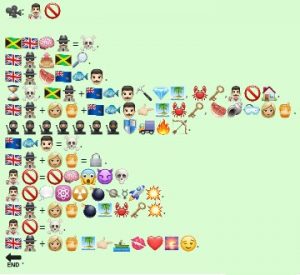Who were these people, and how did/does each contribute to the development of artificial intelligence? How did/does each think “intelligence” could be identified? (50 words each)
Alan Turing, a British mathematician and a ‘founding father’ of artificial intelligence (AI), proposed that humans solved problems and made decisions by applying reason to the information available to them (Anyoha, 2017). He believed that machines could show ‘thinking’ by mimicking the human process and that machine learning could occur by following “the normal teaching of a child” (Turing, 1950, p.22).
Building on this, John McCarthy, a computer and cognitive scientist, added that understanding how humans think was key to unlocking how to build problem-solving machines, but that AI goes beyond simulating human intelligence (“John McCarthy,” 2022). He sparked debate by claiming that AI means machines have ‘beliefs,’ referring to their ability to solve problems using question-answering and ‘if-then’ logic programming.
Herb Simon, a political scientist, connected AI to how humans make decisions, showing that they start with information and then follow a series of rules and used information processing languages to create logic and problem-solving machines (“Herbert A. Simon,” 2022). Simon highlighted that AI differed from human intelligence, as the latter still functions, albeit inconsistently, despite knowledge gaps and preferences (UBS Nobel Perspectives, n.d.).
Marvin Minsky, a mathematician and computer scientist, expanded ‘intelligence’ from procedural thinking to the result of several non-intelligent parts working together, creating the first artificial neural network (“Marvin Minsky,” 2022). Although critical of previous theories on human brain function, Minsky believed brains were machines that computers could copy. He believed AI would lead to machines outperforming people and strongly advised thorough testing (BBC News, 2016).
Timnit Gebru, a computer scientist, continued to highlight similarities between brains and machines, flagging flaws with AI like bias, racism, and ethical issues (“Timnit Gebru,” 2022). Gebru’s work emphasizes the need for representation not just in AI data and the individuals researching it but also to break down the systemic barriers within corporations that prevent diversity at all levels (Levy, 2021).
How do “machine (programming) languages” differ from human (natural) ones? (100 words)
Despite their similarities, machine/programming languages and human ones have notable differences. Programming languages are artificial creations where context is bound by pre-set rules (Harris, 2018). AI may ‘learn’ but it lacks morphology, the idea that word meaning can change based on context. Furthermore, human languages incorporate additional cues beyond simply words (body language, intonation, punctuation) to convey emotion and can use context to understand the meaning even when the words are unclear (mispronunciations), whereas programming language must be logical and precise. As Harris (2018) eluded, imperfections mean the code will not run while many humans possess the powerful ability to interpret and adapt.
How does “machine (artificial) intelligence” differ from the human version? (100 words)
Intelligence, according to McCarthy (2007), is the ability to achieve goals by means of processing information. AI is created with hard-coded rules, from which it cannot deviate, and operates within the confines of the designer’s understanding of a process at one specific time (Chollet, 2019; McCarthy, 2007). This makes AI excellent for collecting and managing massive data sets, processing data according to pre-set parameters, and completing tasks (Chollet, 2019). Human intelligence, however, is better able to generalize, adjust to nuances, and incorporate subtle changes in information like skin tone or cultural norms (Chollet, 2019; Hao, 2020; McCarthy, 2007). AI, therefore, is more about manipulating information and human intelligence is about trying to understand information (Hao, 2020).
How does “machine learning” differ from human learning? (100 words)
Machine learning is designed to make predictions about new information using coded datasets and algorithms (Heilweil, 2020). Unfortunately, when datasets are incomplete, which most are, it produces biased algorithms: varying accuracy rates and/or different decisions for different demographics such as sex, gender, and race (Buolamwini, 2019; Cirillo et al., 2020). These biases can result in “neglect[ing] desired differentiations…or amplify[ing] undesired ones” (Cirillo et al., 2020, para.58) that continue to promote inequalities and racism in systems governing human lives like education, recruitment, policing, and healthcare (Buolamwini, 2019; Cirillo et al., 2020; Heilweil, 2020). While humans are also biased, they often possess the flexibility to adapt to changing contexts and objective scenarios, which is not a feature of machine learning (Heilweil, 2020).
And for your LAST challenge, a version of the Turing Test: how do YOUR answers to these questions differ from what a machine could generate? (200 words)
One of the first indicators that this was written by a human versus a machine is the (attempt) to connect the biography snippets in question 1. Words and phrases like “Building on this,” “expanded” and “continued” refer to the progress of AI in the context of information already included in the text on these specific people, not necessarily on the information on them found online. An article in Futurism suggested that acronyms and punctuation, like hyphens or apostrophes, can indicate human-generated content (Robitzski, 2019). In that light, the use of single apostrophes to imply additional context to terms understood by humans suggests a human author (e.g., “‘beliefs,’” “‘intelligence,’” and “‘learn’”). For fun, a sample from the above text was entered into a Giant Language model Test Room [http://gltr.io/dist/index.html] that highlighted several instances where the likelihood of a machine using that word was 1/1000 or less. These included adjectives (e.g., “notable differences” and “powerful ability”) and the word “morphology.” Another example is the use of the word “unfortunately,” which is included to convey an opinion. These examples suggest that this text is trying to represent emotion and a deeper connection between concepts, which are more characteristic of human intelligence (Hao, 2020).
References
Anyoha, R. (2017, August 28). The history of artificial intelligence. Harvard University. https://sitn.hms.harvard.edu/flash/2017/history-artificial-intelligence/
BBC News. (2016, January 26). AI pioneer Marvin Minsky dies aged 88. https://www.bbc.com/news/technology-35409119
Buolamwini, J. (2019, February 7). Artificial intelligence has a problem with gender and racial bias. Here’s how to solve it. Time. https://time.com/5520558/artificial-intelligence-racial-gender-bias/
Cirillo, D., Catuara-Solarz, S., Morey, C., Guney, E., Subirats, L., Mellino, S., Gigante, A., Valencia, A., Jose Rementeria, M., Santuccione Chadha, A., & Mavridis, N. (2020). Sex and gender differences and biases in artificial intelligence for biomedicine and healthcare. npj Digital Medicine 3, 81. https://doi.org/10.1038/s41746-020-0288-5
Hao, K. (2020, December 4). We read the paper that forced Timnit Gebru out of Google. Here’s what it says. MIT Technology Review. https://www.technologyreview.com/2020/12/04/1013294/google-ai-ethics-research-paper-forced-out-timnit-gebru/
Harris, A. (2018, November 1). Human languages vs. programming languages. Medium. https://medium.com/@anaharris/human-languages-vs-programming-languages-c89410f13252
Herbert A. Simon. (2022, June 2). In Wikipedia. Retrieved June 5, 2022, from https://en.wikipedia.org/wiki/Herbert_A._Simon
John McCarthy (computer scientist). (2022, May 23). In Wikipedia. Retrieved June 5, 2022, from https://en.wikipedia.org/wiki/John_McCarthy_(computer_scientist)
Levy, M. G. (2021, November 9). Timnit Gebru says artificial intelligence needs to slow down. WIRED. https://www.wired.com/story/rewired-2021-timnit-gebru/
Marvin Minsky. (2022, May 25). In Wikipedia. Retrieved June 5, 2022, from https://en.wikipedia.org/wiki/Marvin_Minsky
McCarthy, J. (2007, November 12). What is artificial intelligence? Basic questions. Standford University. http://www-formal.stanford.edu/jmc/whatisai/node1.html
Robitzski, D. (2019, March 11). This site detects whether text was written by a bot. Futurism. https://futurism.com/detects-text-written-bot
Timnit Gebru. (2022, June 5). In Wikipedia. Retrieved June 5, 2022, from https://en.wikipedia.org/wiki/Timnit_Gebru
Turing, A. M. (1950). Computing machinery and intelligence. Mind, 49, 433-460. https://www.csee.umbc.edu/courses/471/papers/turing.pdf
UBS Nobel Perspectives. (n.d.). Herbert A. Simon: Nobel 1978 – Do we understand human behavior? https://www.ubs.com/microsites/nobel-perspectives/en/laureates/herbert-simon.html






